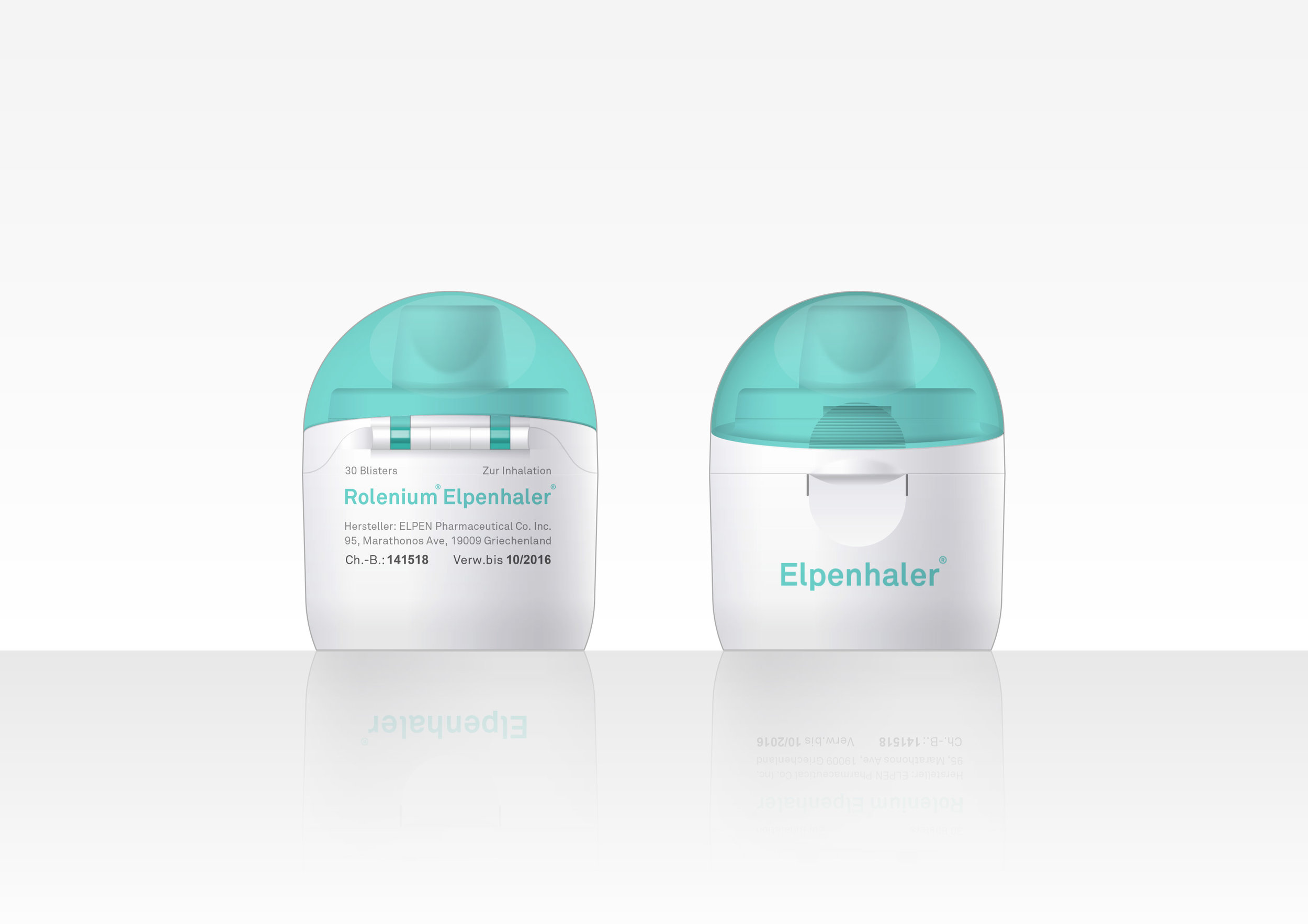ELpenhaler
Elpen Pharmaceuticals
Work undertaken whilst an employee of Cambridge Consultants
Project brief: Develop an enhanced Next-Gen Elpenhaler
ELPEN Pharmaceutical (ELPEN) is a leading Greek pharmaceutical company which specialises in branded generics. Elpenhaler® is ELPEN’s propriety classic DPI device, developed to administer various medications for the treatment of asthma and COPD.
Elpen wanted to develop the next generation Elpenhaler with an improved ‘look and feel’ that aligned with their brand while enhancing usability without changing drug delivery performance.
Classic Elpenhaler
The project started by meeting with ELPEN’s commercial, regulatory and technical stakeholders to define the project scope, objectives, requirements and to discuss user needs.
To identify usability enhancements, we used a human factors method called PCA (Perception/Cognition/Action). We analysed the device’s use steps to gain a deeper insight into the root cause of possible use related errors. Subsequently, we identified high impact areas of enhancements.
PCA analysis to identify areas to enhance usability
During a workshop with Elpen we analysed Elpenhaler’s design from numerous perspectives. There are myriad factors that affect the perceived value of an inhaler from the way it ‘looks’, to the way it ‘feels’ or even the way it fits within a patient’s lifestyle. We concluded that Elpenhaler’s ‘look’ did not convey the company’s brand essence - improving patient’s lives through innovative ideas. We agreed a series of brand attributes which better described the Elpen brand to inform the ‘look’ and brand experience for the next generation device.
Concept development following client workshops
After developing the usability improvement ideas and defining the ‘look’ and brand experience, our team explored a range concepts through sketching, 2D renderings and handling models. A range of concepts with different levels-of-change (mild to wild) were presented to Elpen, patients and health professionals for assessment, from which a single concept was selected.
The selected concept offered a range of enhancements which were viable for Elpen’s production requirements.
A single pin for all pivoting components with a simplified user interface which is more intuitive and could be tuned to give a high quality ‘feel’. The selected direction in terms of ‘look’ was a modern but friendly design with angular split lines cut into a pebble shape which offered improved portability because of its soft form.
Multiple rounds of prototypes were created to evaluate the design
Our designers and engineers collaborated closely during the detail design phase to balance design and functional trade-offs. Much of the refinement focussed on the cap and blister compartment opening functions, with the team aiming to find the balance between ease-of-use and robustness against opening when dropped while considering manufacturability. As part of the engineering process we undertook finite element analysis, functional tolerance analysis and risk assessments including product failure modes and effect analysis (FMEA).
Next-Gen Elpenhaler features
The final design has two independent but intuitive closures, with clip designs and material thickness optimised to get the ‘feel’ just right whilst retaining device robustness.
“We have already received positive feedback about the upgraded design of Elpenhaler® and we expect it to boost our growth aspirations for the years to come.”









